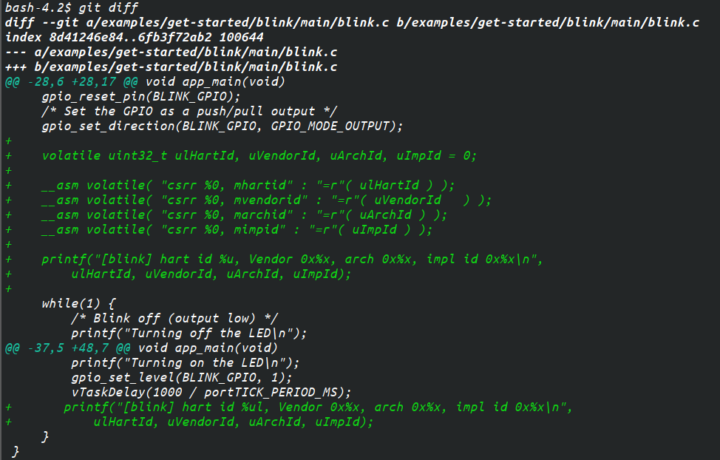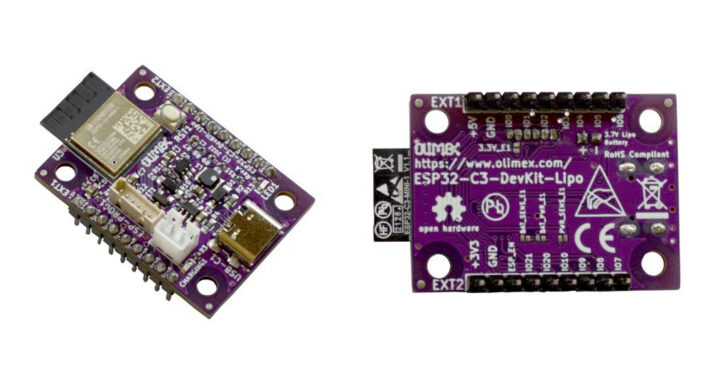Olimex has just launched the ESP32-C3-DevKit-Lipo board based on ESP32-C3 RISC-V wireless microcontroller offering WiFI 4 and Bluetooth 5.0 connectivity, some I/Os, as well as USB and JTAG.
As its name implies, the board can be powered by a LiPo battery and charged through a USB Type-C port. It offers up to 15 GPIO for expansion and comes with an ICSP connector in case you need to reflash or debug the bootloader through a JTAG interface.
ESP32-C3-DevKit-Lipo specifications:
- Wireless module – Espressif Systems ESP32-C3-MINI-1-N4 module with:
- ESP32-C3 (ESP32-C3FN4) 32-bit RISC-V single-core processor up to 160 MHz with 4 MB embedded flash, 384 KB ROM, 400 KB SRAM (16 KB for cache), 8 KB SRAM in RTC
- Connectivity – 2.4 GHz 802.11b/g/n Wi-Fi 4 1T1R up to 150 Mbps & Bluetooth LE 5.0 with PCB antenna
- USB – 1x USB Type-C port for programming and JTAG debugging
- Expansion – 2x 9-pin headers (soldered) with up to 15x GPIO and power supply signals (5V, 3.3V, GND)
- Misc
- ICSP programming connector to rescue (the bootloader) with ESP-PROG-C USB to serial converter
- (Battery) status LED
- RESET button
- Power Supply
- 5V via USB-C port
- 2-pin header for LiPo battery; supports charging
- Dimensions – Small with four mounting holes…
The board supports Arduino, PlatformIO, Espressif ESP-IDF, and other frameworks/languages compatible with ESP32-C3 microcontroller. Olimex ESP32-C3-DevKit-Lipo is open-source hardware and KiCad schematics, PCB layout, and other hardware design files have been released on GitHub under the “CERN Open Hardware Licence Version 2 – Strongly Reciprocal” together with ESP32-C3 datasheet and technical reference manual.
There’s also a basic ESP32-C3-DevKit-Lipo user manual on GitHub, and Shteryana Shopova used the board for a RISC-V workshop in Bulgaria (see the presentation slides in Bulgarian) where people could learn how to use the ESP-IDF with a C sample, JTAG debugging with OpenOCD, and she even showed some inline RISC-V assembly in the C code, as well as some Bluetooth demo apps.

Olimex sells the board for 6 Euros on their website.

Jean-Luc started CNX Software in 2010 as a part-time endeavor, before quitting his job as a software engineering manager, and starting to write daily news, and reviews full time later in 2011.
Support CNX Software! Donate via cryptocurrencies, become a Patron on Patreon, or purchase goods on Amazon or Aliexpress





